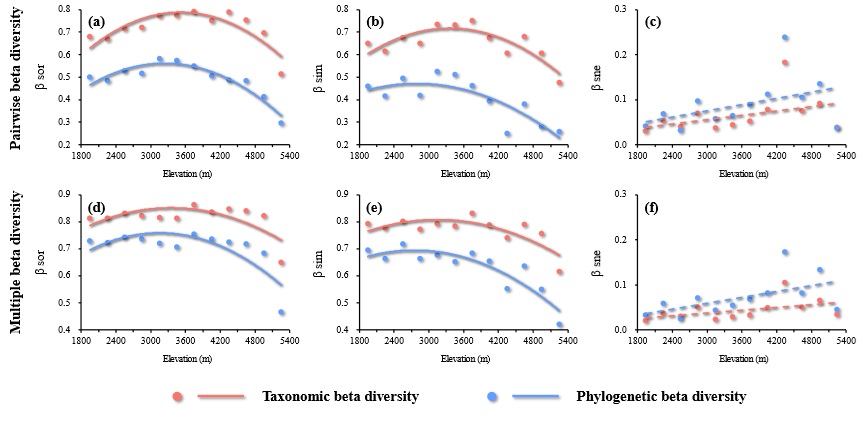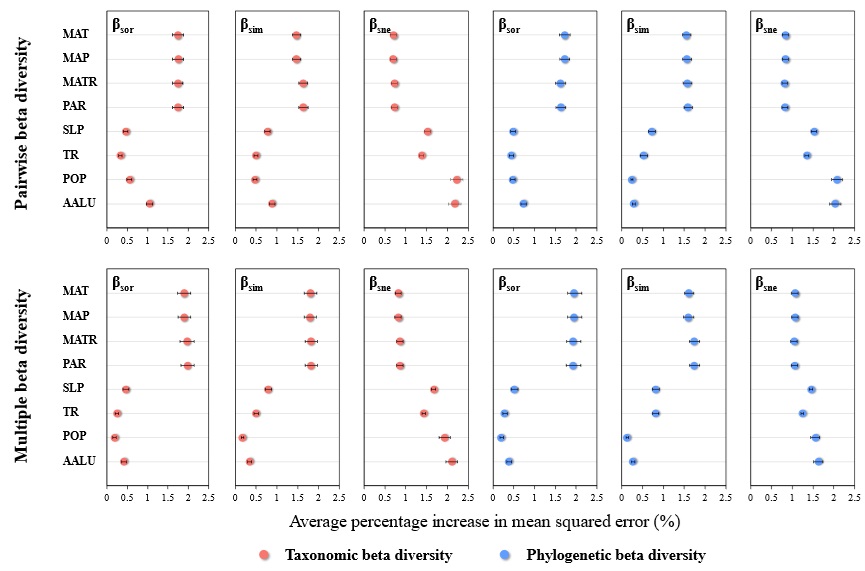Climate-driven environmental filtering determines hump-shaped elevation pattern of seed plants beta diversity in central Himalayas
Published 06 November, 2024
Understanding how and why assemblage composition changes along spatial gradient is one of the core questions in ecology and biogeography. This area of study is closely related to community assembly, biogeographical regionalization and biodiversity conservation.
Beta diversity, a measure of assemblage dissimilarity among sites, provides a feasible approach for addressing these questions. However, due to the various types, dimensions and components of beta diversity, elucidating the spatial patterns and determining factors is challenging, and any single analysis might lead to simplistic or incomplete conclusions.
To that end, researchers from Guangdong Academy of Sciences and Beijing Forestry University in China established 96 quadrats, each covering 400 m², along an elevational gradient of 1,800 to 5,400 m in the Gyirong Valley of the central Himalayas. The researchers examined the elevational patterns of seed plant beta diversity and its turnover and nestedness components of pairwise and multiple types and taxonomic and phylogenetic dimensions simultaneously.
“Mountains play an important role in global biodiversity conservation and ecological experimentation. As the world’s highest mountains and one of the global biodiversity hotspots, the Himalayas encompass a typical biotic and abiotic elevational gradient and have been the focus of various ecological and conservation studies,” explains Jianchao Liang, lead and corresponding author of the study published in Plant Diversity.
The team investigated the potential mechanisms underlying the elevational patterns of beta diversity and quantified the influence of environmental variables such as climate, topography and human disturbance. T
“We found that both pairwise and multiple, taxonomic and phylogenetic beta diversity were predominantly driven by turnover components, exhibiting a hump-shaped pattern along the elevational gradient,” shares Liang.
Notably, both pairwise and multiple phylogenetic beta diversity were remarkably lower than their taxonomic counterpart. “These patterns were significantly less than random expectation and were mostly associated with climate variables,” adds Liang.
The researchers concluded that assemblage dissimilarity of seed plants mostly originated from the replacement of closely related species determined by climate-driven environmental filtering. Accordingly, conservation efforts should better cover elevations with different climate types to maximalize biodiversity conservation, rather than only focus on elevations with highest species richness.
“Further, we postulate that comparisons of beta diversity of different types, dimensions and components would be useful to establishing consensus on the origin and mechanism of assemblage dissimilarity,” says Liang.



Contact the author: Jianchao Liang, 13760813102@163.com
Funder: This research was supported by the National Natural Science Foundation of China (grant number 31901109) and Guangdong Basic and Applied Basic Research Foundation (grant number 2021A1515110744).
Article: Climate-driven environmental filtering determines hump-shaped elevational pattern of seed plant beta diversity in the central Himalayas. Plant Diversity, https://doi.org/10.1016/j.pld.2024.07.011